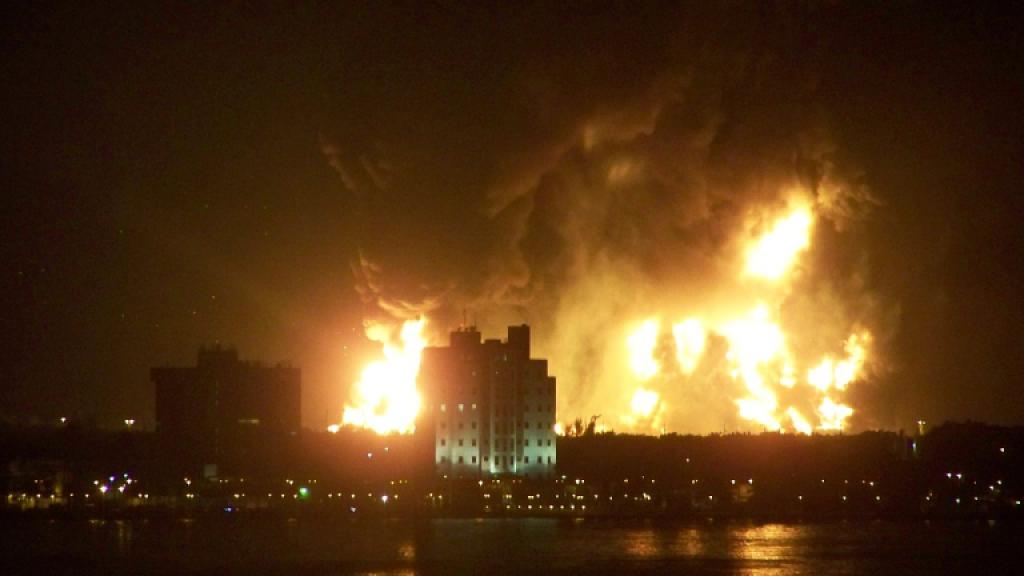
Chevron El Segundo crude oil fire sparks multi-agency investigation into jet fuel unit explosion
Thank you for choosing Automatic Translation. Currently we are offering translations from English into French and German, with more translation languages to be added in the near future. Please be aware that these translations are generated by a third party AI software service. While we have found that the translations are mostly correct, they may not be perfect in every case. To ensure the information you read is correct, please refer to the original article in English. If you find an error in a translation which you would like to bring to our attention, it would help us greatly if you let us know. We can correct any text or section, once we are aware of it. Please do not hesitate to contact our webmaster to let us know of any translation errors.
A massive explosion and fire at Chevron’s El Segundo refinery on October 2 has triggered a sweeping investigation into the facility’s jet fuel processing unit, known as the Isomax.
The blast lit up the South Bay night sky and sent shockwaves across the region, yet Chevron has remained tight-lipped about the root cause. Experts say the scale of the incident demands a thorough probe into human, organizational, and technological failures.
Photo Credit: Wikipedia Creative Commons License (This photo is of a different fire and has nothing to do with the current story.)
View of the refinery explosion in Catano, Puerto Rico in 2009, just moments after the initial explosion. Photo was taken from across the bay in Old San Juan.
Deutsch: Raffineriefeuer in Catano, Puerto Rico kurz nach der ersten Explosion. Fotografiert von Old San Juan aus.
Date: 23 October 2009
Author: Enriquillonyc
Focus on the Isomax Unit
Chevron confirmed that the Isomax unit—responsible for converting crude oil into jet fuel—remains offline while other parts of the refinery continue operating.
“Until we can figure out everything that happened here and make sure it doesn’t happen again, we won’t restart it,” said Chevron spokesperson Ross Allen to Los Angeles Times, Oct. 8, 2025.
Although no fatalities occurred, four workers have since filed a lawsuit citing orthopedic injuries and trauma sustained while fleeing the explosion, according to ABC7 News.
Experts Point to Equipment and Sensor Failures
Industry analysts suggest that equipment failure is a likely culprit. Andrew Lipow, president of Lipow Oil Associates, noted that refinery fires often begin when hot oil or gas escapes and finds an ignition source.
Faisal Khan of the Mary Kay O’Connor Process Safety Center warned that overreliance on advanced oil sensors—without human verification or backup systems—can lead to catastrophic errors.
“Technology has advanced, but without redundancy or oversight, it can fail in dangerous ways,” Khan said.
Firefighting Challenges and Containment
El Segundo Fire Division Chief Casey Snow described the difficulty of fighting refinery fires, where fuel is abundant and heat can cause cascading equipment failures. Crews focused on isolating the blaze by controlling fuel valves and cooling adjacent structures with water to prevent further spread.
Despite the dramatic visuals, Chevron claims the fire mostly consumed fuel within the unit, not the structure itself. However, Lipow cautioned that intense heat likely caused unseen damage to nearby equipment.
Investigations Underway
Multiple agencies are now investigating:
- Chevron’s internal probe
- South Coast Air Quality Management District (for permit violations)
- California Department of Industrial Relations / Cal/OSHA
- U.S. Chemical Safety and Hazard Investigation Board (currently inactive due to federal shutdown and budget cuts)
USC engineering professor Najmedin Meshkati expressed concern that the Chemical Safety Board’s absence could compromise the investigation’s rigor. He urged officials to examine the “confluence of human, organizational, and technological factors,” citing lessons from the 2015 Torrance refinery explosion.
“We need to look at each one of those three sets of factors and then to the interaction of those factors,” Meshkati told the Los Angeles Times.
